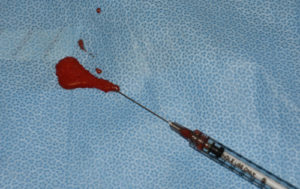Injectable fillers are the most common method used today for a wide variety of facial volumizing effects. Ideal for patients that want an immediate result that avoids surgery, the selection of almost twenty different fillers provides a filler type for every patient’s needs. Despite these advantages injectable fillers have one major downside…lack or persistence. Despite manufacturer’s efforts to improve their longevity, permanent injectable fillers that have a good safety profile are not on the near horizon.
Fat grafting offers an injectable material that does have the potential for a permanent augmentation effect. Its problem, however, despite this potential is that it is wildly unpredictable. Different intraoperative processing methods and harvest sites have been used but the concept of optimizing fat cell survival remains not completely worked out. In addition, traditional fat grafting creates a thicker more putty like material which does not lend itself well to a smooth linear injection like that of synthetic injectable fillers.

The physical benefit of nonfat injections are that they act like injectable fillers. Their emulsified nature allows them to be injected from very superficially into or just under the dermis or into deeper tissue planes. Such particulated fat grafting has been shown to result in improved skin quality that is maintained out to six months to year
Dr. Barry Eppley
Indianapolis, Indiana


